
A video playlist covering many different areas of auto body repair.
- Subject:
- Autobody
- Practical & Applied Arts
- Material Type:
- Activity/Lab
- Lesson
- Author:
- Car Addict Garage
- Date Added:
- 11/10/2023

A video playlist covering many different areas of auto body repair.

This art history video discussion looks at the Colosseum (Amphitheatrum Flavium), c. 70-80 C.E., Rome.
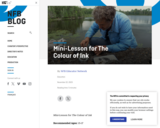
Jason Logan is a Toronto-based artist, inkmaker and forager. He began his career as an illustrator in New York City and became interested in natural sources of pigment when his children were born. This documentary, organized by colour, takes us into Jason’s world, highlighting his curiosity, spirit of experimentation and creativity as he gathers natural and botanical materials throughout his travels and transforms them into ink, working like a mad scientist of sorts. For Jason, the creation of ink becomes a vehicle for connecting and relationship building with artists and other creatives from around the world. This mini lesson invites students to analyze where art materials come from by looking at the impact of drawing on the natural world to make ink. They will also explore concepts of permanence and ephemerality and can engage in geographically tracking the movement of Logan’s inks from place to place. The mini lesson also creates opportunities for students to research an individual artist represented in the film, and finally to work in pairs to make ink for one another.

This art history video discussion examines the Column of Trajan, Carrara marble, completed 113 C.E., Rome. Dedicated to Emperor Trajan (Marcus Ulpius Nerva Traianus b. 53 , d. 117 C.E.) in honor of his victory over Dacia (now Romania) 101-02 and 105-06 C.E.
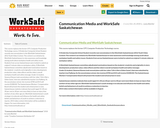
This course replaces the former CPT; Computer Production Technology course.
A Kindersley Composite School Student recently won second place in the WorkSafe Saskatchewan 2012 Youth Video Contest. The contest is an initiative by WorkSafe Saskatchewan to raise awareness and knowledge among youth about workplace health and safety issues. Students from across Saskatchewan were invited to submit an original 3-minute video on workplace safety.
A WorkSafe Saskatchewan committee adjudicated nominations based on the students’ creativity and originality in story development, production value, video effects and the video’s overall workplace health and safety message.
Grade 12 student, Vanessa Klassen took second place with her video “Life is Not a Video Game”, that was submitted by teacher Lisa Padberg. As the second place winner she receives $700 and KCS will receive $1000.00. The Saskatchewan Workers’ Compensation Board will present the student and school prizes in June.
Saskatchewan statistics indicate that youth (aged 15-24) are 20 per cent to 30 per cent more likely to have an injury than workers of any other age are. WorkSafe Saskatchewan’s youth strategy is to educate and influence the health and safety beliefs and behaviours of youth to achieve a reduction in injuries.
2013 video contest information will be available in August.
For more information, visit: http://www.worksafesask.ca/
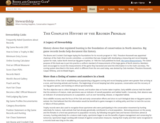
History shows that regulated hunting is the foundation of conservation in North America. Big game records books help document this history.
The Boone and Crockett Club began laying the foundations for its records program in 1902. Theodore Roosevelt was appointed chairman of the Club’s first records committee—a committee that was charged with developing a measuring and record keeping system for male, native North American big game trophies. In 1906 the Club published its book, Big Game Measurements. The stated purpose of this book was to put into practice a uniform standard of measurements of the large game of North America. Members were encouraged to record the measurements of the game they harvested and send the information in to the Club's secretary. The scoring system described in this book, which is different from the one used today, was devised by Club members Theodore Roosevelt, Caspar Whitney, and Archibald Rogers.

In the everyday electrical devices we use calculators, remote controls and cell phones a voltage source such as a battery is required to close the circuit and operate the device. In this hands-on activity, students use batteries, wires, small light bulbs and light bulb holders to learn the difference between an open circuit and a closed circuit, and understand that electric current only occurs in a closed circuit.

«Ces pages ont été conçues pour aider les gens à en apprendre davantage sur les impôts. ...
Suivez ce cours en ligne pour comprendre l’impôt sur le revenu des particuliers au Canada.»
Y compris sont des plans de leçons et des activités pédagogiques. Thèmes abordés:
-Commencer un nouvel emploi
-Se préparer à remplir sa déclaration de revenus
-Remplir une déclaration de revenus de base
-Ce qui arrive de suite
-Utiliser «Mon dossier»
-À quoi servent les impôts
-Accéder à ses prestations et crédits

If you are new to the computer or just want to know more about how it works then Computer Basics is the place to start.
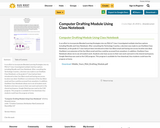
In an effort to incorporate Blended Learning Strategies into my PAA 6/7 class I investigated multiple interface options including Moodle and Class Notebook. After consulting the Technology Coaches, a decision was made to use OneNote Class Notebook, as the grade 6/7 class had just been introduced to their Sun West email and having one access location was ideal. OneNote is an extension of the Sun West email and thus could be accessed from anywhere. In addition, OneNote Class Notebook allows me to see all student work. Students only have access to their own work and work in the shared workspaces. Google Sketchup was used as the CAD program. This program is available for free download, thus students could have the program at home.
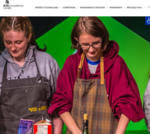
«Les Compétences pour réussir, anciennement appelées compétences essentielles, ont été identifiées et lancées par le gouvernement du Canada en mai 2021, mettant à jour le cadre existant en réponse à un marché du travail en évolution. Ces 9 compétences sont mises à jour pour refléter l'évolution rapide des besoins et des exigences en matière de compétences:
-Calcul
-Communication
-Collaboration
-Résolution de problèmes
-Rédaction
-Adaptabilité
-Lecture
-Créativité et innovation
-Compétences numériques
Elles constituent la base de l'apprentissage de toutes les autres compétences et permettent aux gens d'évoluer dans leur travail et leur vie et de s'adapter aux changements sur le lieu de travail et dans la vie.
Vous trouverez ci-dessous de plus amples informations sur ces compétences, ainsi que des cahiers d'exercices, des évaluations, des livrets et bien plus encore ! Ces outils sont conçus pour que les élèves et les enseignants les utilisent dans leurs cours.»

Students learn how the total solar irradiance hitting a photovoltaic (PV) panel can be increased through the use of a concentrating device, such as a reflector or lens. This is the final lesson in the Photovoltaic Efficiency unit and is intended to accompany a fun design project (see the associated Concentrating on the Sun with PVs activity) to wrap up the unit. However, it can be completed independently of the other unit lessons and activities.

Students design, build and test reflectors to measure the effect of solar reflectance on the efficiency of solar PV panels. They use a small PV panel, a multimeter, cardboard and foil to build and test their reflectors in preparation for a class competition. Then they graph and discuss their results with the class. Complete this activity as part of the Photovoltaic Efficiency unit and in conjunction with the Concentrated Solar Power lesson.
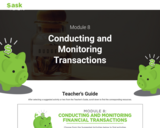
Explore forms, documents and processes used to conduct and monitor common financial transactions.
Teacher Guide included.
2-3 hours
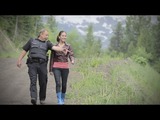
Viviana rides along with a conservation officer, who protects the environment and natural resources. Dealing with wildlife, hunting and angling issues and pollution, he investigates possible violations. A grateful public is his key reward

Find out what work is like for a conservation officer in Canada. This work description is applicable to all Conservation and fishery officers (NOC 22113).

We design and create objects to make our lives easier and more comfortable. The houses in which we live are excellent examples of this. Depending on your local climate, the features of your house have been designed to satisfy your particular environmental needs: protection from hot, cold, windy and/or rainy weather. In this activity, students design and build model houses, then test them against various climate elements, and then re-design and improve them. Using books, websites and photos, students learn about the different types of roofs found on various houses in different environments throughout the world.

Students work in pairs to create three simple types of model bridges (beam, arch, suspension). They observe quantitatively how the bridges work under load and why engineers use different types of bridges for different places. They also get an idea of the parts needed to build bridges, and their functions. The strength of model bridges is mainly a factor of the quality of materials used, and therefore they do not provide a clear visual representation of tension and compression forces involved. Yet, students are able to see these forces at work in three prototype designs and draw conclusions about their dependence on span, width and supporting structures of the bridge designs.

I wanted to revisit contouring for all the different face shapes out there. I'm trying to simplify it as much as possible, but I DO think these tips should work for every face shape whether you have a wide face, narrow face, long chin, large forehead, etc. Remember to start with the overall shape and then refine by section
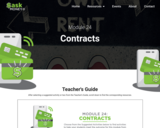
Examine the components and legalities of financial contracts.
Teacher Guide included.
3-5 hours